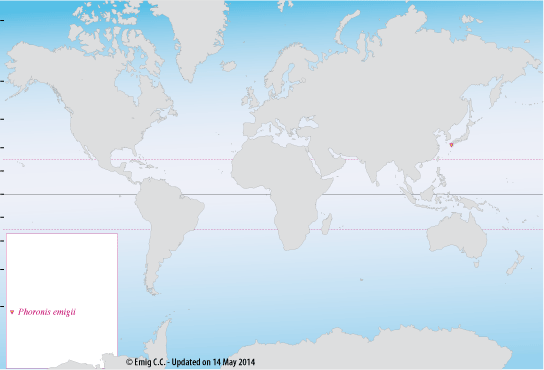|
Phoronis emigii Hirose, Fukiage, Katoh & Kajihara, 2014 Larva unkown |
 ° References of the most recent publications
| ||||||
| Diagnosis | ||||||
|
Last update: May 15, 2014
Extended specimens up to about 20 mm, diameter 0.3 to 0,7 mm.
Sexual reproduction: no data. Phoronis emigii is embedded vertically in a sandy sediment, at 33 m depth, densities aboutto 90 individuals/100 cm-2. Etymology: the specific name, a masculine noun in the genitive case, is in honor of the French researcher Dr. Christian C. Emig for his remarkable contributions to lophophorate systematics.
The distribution of Phoronis emigii is represented below on the map. Last update: May 14, 2014  |
References on Phoronis emigii |

